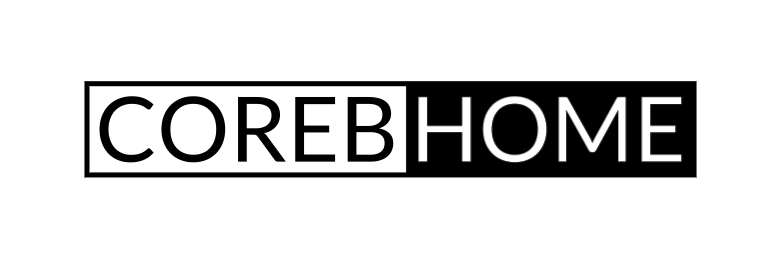In the age of technological marvels, the home has evolved into a realm where intelligence and connectivity converge, giving birth to the phenomenon of smart home systems. No longer confined to the realm of science fiction, smart homes are becoming an integral part of modern living, transforming residences into hubs of efficiency, comfort, and security. In this exploration of the intricacies of smart home technology, we unravel the layers of innovation that orchestrate the symphony of connectivity within our living spaces.

Foundations of Intelligence:
At the heart of every smart home is a robust foundation of intelligence. It begins with the deployment of sensors and actuators that serve as the nervous system, collecting and disseminating data to and from various devices. From motion sensors that detect human presence to temperature sensors that gauge environmental conditions, these foundational elements lay the groundwork for a responsive and adaptive living space.
Connectivity Protocols:
The seamless operation of smart home systems relies on effective communication between devices. A myriad of connectivity protocols facilitates this exchange of information. From the ubiquitous Wi-Fi and Bluetooth to specialized protocols like Zigbee and Z-Wave, each has its strengths and applications. The choice of protocol depends on factors such as range, power consumption, and the specific requirements of the connected devices.
Centralized Control Hubs:
Central to the orchestration of a smart home is the centralized control hub. This intelligent nucleus serves as the command center, allowing users to manage and monitor connected devices through a single interface. Smart speakers, dedicated smart home hubs, and even smartphones function as control hubs, providing users with the ability to customize settings, automate routines, and receive real-time updates.
The Elegance of Voice Commands:
The integration of voice recognition technology has added a layer of elegance to smart home interactions. Voice-activated assistants, such as Amazon’s Alexa and Google Assistant, empower users to control devices, request information, and even initiate complex automation scenarios simply by uttering a command. This hands-free approach enhances accessibility and convenience, making smart homes more user-friendly.
Sophisticated Automation:
One of the defining features of smart home systems is automation. It goes beyond simple remote control, enabling devices to operate autonomously based on predefined conditions. Whether it’s adjusting thermostat settings based on occupancy patterns or initiating a sequence of actions when a security sensor is triggered, automation enhances efficiency, comfort, and energy conservation.
Security as a Priority:
As smart homes become more prevalent, the issue of security takes center stage. The interconnected nature of devices introduces potential vulnerabilities that need to be addressed. Robust encryption, secure authentication mechanisms, and regular software updates are crucial in fortifying smart home security. Manufacturers and users alike must prioritize the implementation of best practices to safeguard against cyber threats.
Interoperability Challenges:
The rapid proliferation of smart home devices from various manufacturers has led to interoperability challenges. Devices designed to work within closed ecosystems may struggle to communicate with those from different brands. Industry initiatives, such as the Open Connectivity Foundation (OCF) and Project Connected Home over IP (CHIP), aim to establish universal standards that promote interoperability and simplify the user experience.
Energy Efficiency Solutions:
Smart home technology plays a pivotal role in fostering energy efficiency. From smart thermostats that optimize heating and cooling based on usage patterns to intelligent lighting systems that adjust brightness according to natural light conditions, these solutions contribute to reduced energy consumption and environmental sustainability. The ability to monitor energy usage in real-time empowers users to make informed decisions about their consumption habits.
Inclusive Living for All:
Smart home technology has the potential to enhance accessibility and inclusivity. For individuals with disabilities or the elderly, features like voice control, automated lighting, and smart home monitoring provide a level of independence that might otherwise be challenging to achieve. The emphasis on inclusive design ensures that the benefits of smart home systems extend to a diverse range of users.
Evolution of Entertainment:
The integration of smart home systems has redefined the entertainment experience within residences. Smart TVs, audio systems, and streaming devices can be seamlessly connected and controlled, creating immersive entertainment environments. Integration with virtual assistants further enhances the experience, allowing users to effortlessly command their entertainment systems.
Health and Wellness Integration:
The intersection of smart home technology with health and wellness is a burgeoning frontier. From smart mattresses that monitor sleep patterns to bathroom fixtures that track health metrics, the integration of health-focused devices contributes to holistic well-being. These innovations empower users to take proactive measures towards healthier lifestyles.
Data Privacy Concerns:
The collection and utilization of personal data by smart home devices raise legitimate concerns about privacy. As devices gather information about daily routines, preferences, and even biometric data, ensuring robust data privacy measures becomes imperative. Manufacturers must implement transparent data practices, secure storage solutions, and user-friendly privacy settings to build trust among consumers.
The Path Ahead:
As smart home systems continue to evolve, the path ahead is marked by exciting possibilities and potential challenges. The convergence of artificial intelligence, 5G connectivity, and the Internet of Things (IoT) is set to unlock new realms of innovation. However, stakeholders must navigate issues of standardization, security, and ethical considerations to ensure that the smart homes of tomorrow are not only intelligent but also responsible and sustainable.
In conclusion, the symphony of connectivity that defines smart home systems is a testament to the boundless potential of technology to enhance our living spaces. From the foundational elements of sensors and connectivity protocols to the sophisticated realms of automation and artificial intelligence, every note in this symphony contributes to a harmonious and intelligent home. As we embrace the future of living, the orchestration of technology and home is poised to create a melody of unparalleled convenience, efficiency, and sophistication.








No Comment